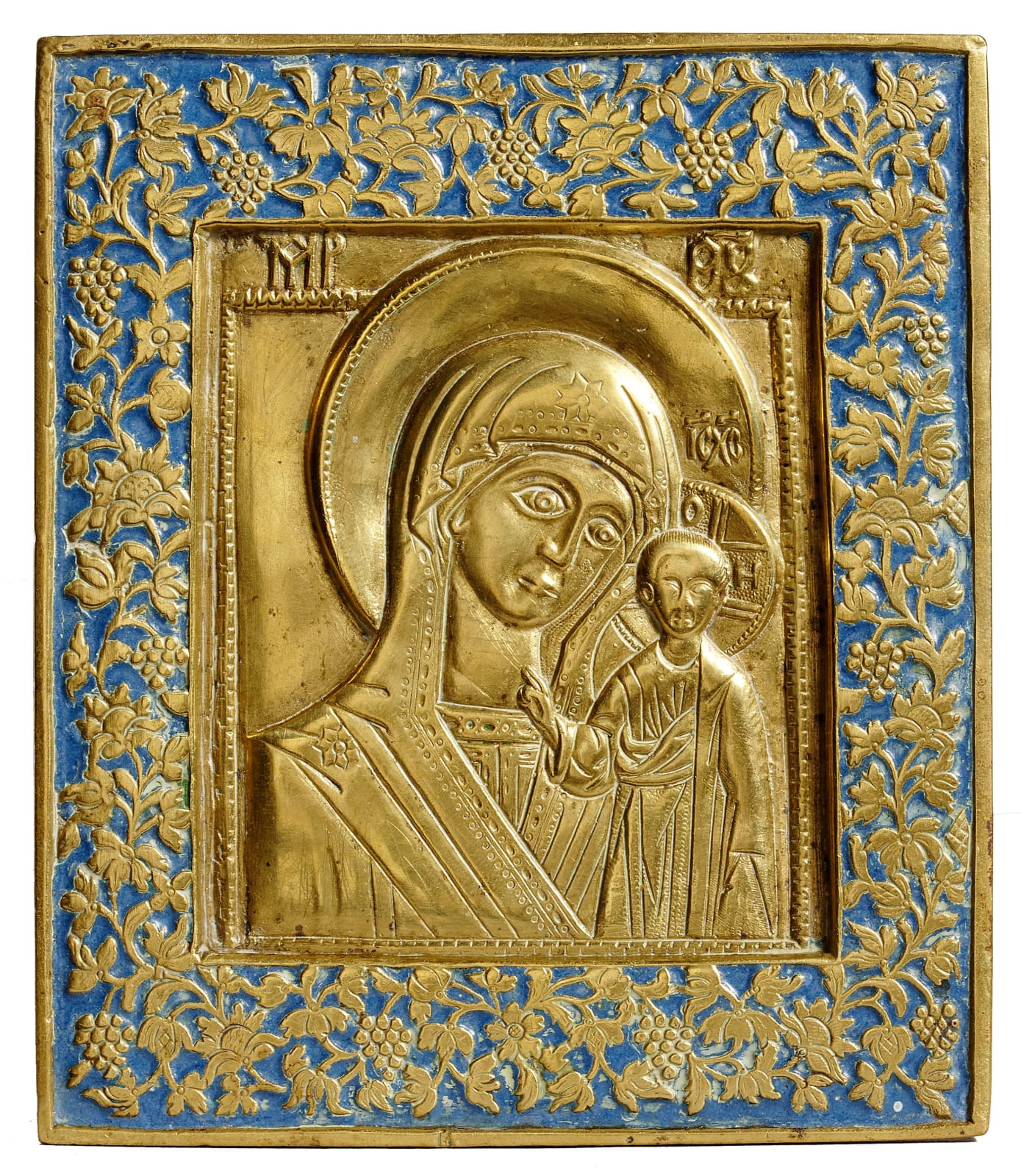Virgin of Kazan , 19th century
Russian icon, copper alloy with dark blue enamel
4 1/2 x 3 7/8 in
11.4 x 9.8 cm
11.4 x 9.8 cm
2909
Our icon closely follows the iconography of the Kazanskaya. The Virgin gazes at the onlooker with her head inclined to her left, towards the Christ-child. Christ is standing before the Virgin. The Virgin of Kazan or Kazanskaya is a variant of the celebrated Byzantine Hodegetria. The oldest Russian variation of the Hodegetria is the Virgin of Vladimir, and over the centuries various versions of this icon arose, often linked to geographical locations in Russia such as the Tikhvinskaya, Smolenskaya, etc. The intimate close-up of the head and arms makes the icon especially direct. The eyes of the Virgin are wide open in sorrowful contemplation and she is not looking at Christ but addresses her gaze to the person praying in front of the image.
To understand the origin of objects such as this metal icon, one must turn to the reforms of Patriarch Nikon under Tsar Alexei Mikhailovich in the second half of the seventeenth century. These reforms led to a schism in the church. The Old Believers fled into rural Russia to continue their traditional forms of worship. There, they founded the monastery at Vyg where they began to produce metal icons on a large scale. The monastery was supressed during the reign of Emperor Nicholas I. Even with the suppression, the high-quality metalwork produced at the monastery inspired many replicas, especially in surviving centres of Old Believer crafts. The best quality enamel and bronze icons were made in Moscow in the second half of the nineteenth century during a religious revival that gripped Russia. They often used models inspired by those of Vyg.
Exhibitions
Christmas 202220
of
20

